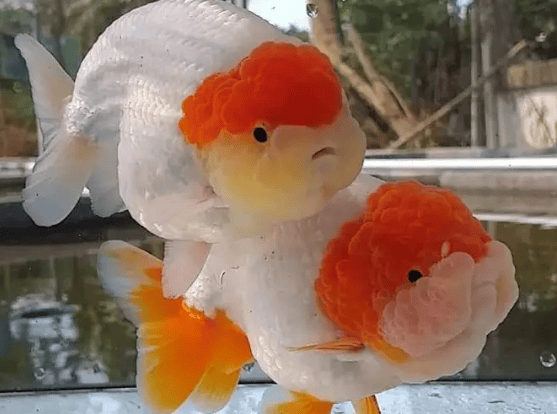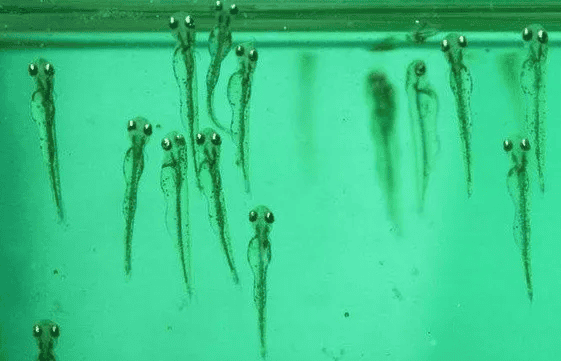Many aquarists’ understanding of goldfish is still at the primary stage, especially novice aquarists. Today I would like to share with you some in-depth knowledge about goldfish reproduction, including the incubation method of goldfish fertilized eggs, the close relationship between goldfish spawning time and water temperature changes, and tips for handling goldfish after spawning. I hope we can learn and communicate together to provide more practical goldfish breeding knowledge to aquarists.
1. Goldfish spawning time and frequency
The spawning time of goldfish is closely related to the water temperature environment in which it lives. Under suitable feeding and management conditions, goldfish usually start laying eggs in spring every year. However, the specific spawning time will also vary depending on the region and temperature. Sometimes, breeders also artificially control the spawning time of goldfish by regulating conditions such as temperature, water quality, air pressure, light, and dissolved oxygen.

Experiments show that the amount of dissolved oxygen in water The level can directly affect the spawning activity of goldfish. When goldfish spawning activity is slow, by increasing the oxygen content in the water, such as using an oxygen pump, the goldfish can quickly be stimulated to chase each other and lay eggs. This fully illustrates the important impact of dissolved oxygen in water on goldfish spawning activities.
On the contrary, if you want to delay the spawning time of goldfish, you can also achieve this by adjusting the breeding environment. For example, keep female and male broodstock separately in older water, lower the water temperature appropriately, reduce feeding, do not put artificial fish nests, reduce the stimulation of new water, and control light, etc.
During the breeding season, goldfish spawning time is usually concentrated around 4-5 o'clock to 10 o'clock in the morning. However, there are also a small number of mature broodstock fish that will lay eggs after changing to new water at 5-6 o'clock in the afternoon, and some individual fish will even lay eggs at night.
As for the number of goldfish reproduction, generally speaking, spring is the main breeding period for goldfish. Each mature female goldfish can usually lay eggs 2-3 times, and some with better physique can even lay eggs 4-6 times. But there will be a certain interval between each spawning, usually about 10 days. If the parent fish is weak, the interval may be longer.
If conditions permit, some goldfish farms will also conduct a second phase of breeding in autumn. However, because the climate and environmental conditions in autumn are different from those in spring, fry grown in autumn often do not develop as well as those bred in spring.
2. What should I do after goldfish lay eggs?
Goldfish will go through the process of spawning every year, and the specific time varies depending on regional temperature differences. In warm areas, goldfish can even be allowed to spawn as early as January or February through greenhouse induction. In general areas, goldfish usually lay eggs in outdoor environments between early April and mid-May. The timing of spawning will be affected by many factors such as temperature, water quality, air pressure, light and dissolved oxygen. Therefore, we often control the spawning time of goldfish by adjusting these factors in artificial breeding.
After goldfish spawn, the best thing to do is to move the broodstock to a new container that has been prepared in advance to ensure that they have a suitable and clean living environment. If conditions are limited and it is impossible to provide a new living environment for the broodstock, then at least half of the water quality during spawning should be replaced. This is because after goldfish spawn, a large amount of turbid semen and unfertilized fish eggs will remain in the water, which will cause the water quality to rapidly deteriorate, produce a strong fishy smell, and pose a serious threat to the health of goldfish.
In addition to improving water quality, necessary anti-inflammatory and disinfection measures must be taken after goldfish spawn. Disinfectants such as methylene blue, potassium permanganate, or table salt can be used to prevent goldfish wound infections. At the same time, ensuring adequate oxygen supply and light is crucial for goldfish recovery after spawning.
Finally, the dietary management of goldfish after spawning cannot be ignored. Providing sufficient live food is a necessary condition to help the fish recover as soon as possible, because live food is rich in protein and can meet the needs of goldfish growth and development. However, it should be noted that the water quality environment should be monitored when feeding live bait to ensure that the goldfish lives in a healthy environment.

3. How to hatch fertilized goldfish eggs
Preparation of the hatching environment
First of all, we need to thoroughly clean the fish pond (tank, basin) and fill it with fresh and dried water. This prepared pond can be used as an incubation pond. When the water temperature of the hatching pool is the same as that of the spawning pool, we can put the fish nest with fish eggs into the hatching pool. Generally speaking, about 6 fish nests with fish eggs can be placed in a 2-meter-square pond.
Identification and hatching process of fertilized eggs
The fertilized eggs of goldfish are usually orange-yellow and translucent, with an egg diameter between 1.0 and 1.2 mm. If within 24 hours after fertilization, we find that some eggs begin to turn white, it means that these are unfertilized eggs. Those eggs that are successfully fertilized will go through a series of important developmental stages, including cell division, blastocyst stage, gastrula stage and larvae stage. This process usually takes 4 to 7 days, and the specific time for hatching and membrane rupture will also be affected by the water temperature. When the water temperature is higher than 25°C, it only takes 2 to 3 days for these fertilized eggs to hatch into larvae.
Work after hatching
3 to 7 days after fertilization, the larvae will successfully break out of the egg membrane and enter the rearing stage. At this time, their body length is approximately 1.5 to 2.0 cm. At this stage, we need to screen the larvae and retain the excellent individuals and eliminate the bad larvae based on criteria such as whether the body shape is well-proportioned and whether the tail fin is separated in the center to form a four-tailed tail. After the screening is completed, the remaining larvae will be put into the breeding pond to continue raising.
After one month of careful rearing, the body length of the larvae can reach 3 to 4 centimeters. At this time, we will conduct a second screening, adjust the stocking density according to the growth of the larvae, and officially enter the feeding stage of juvenile fish.

 扫一扫微信交流
扫一扫微信交流
发布评论